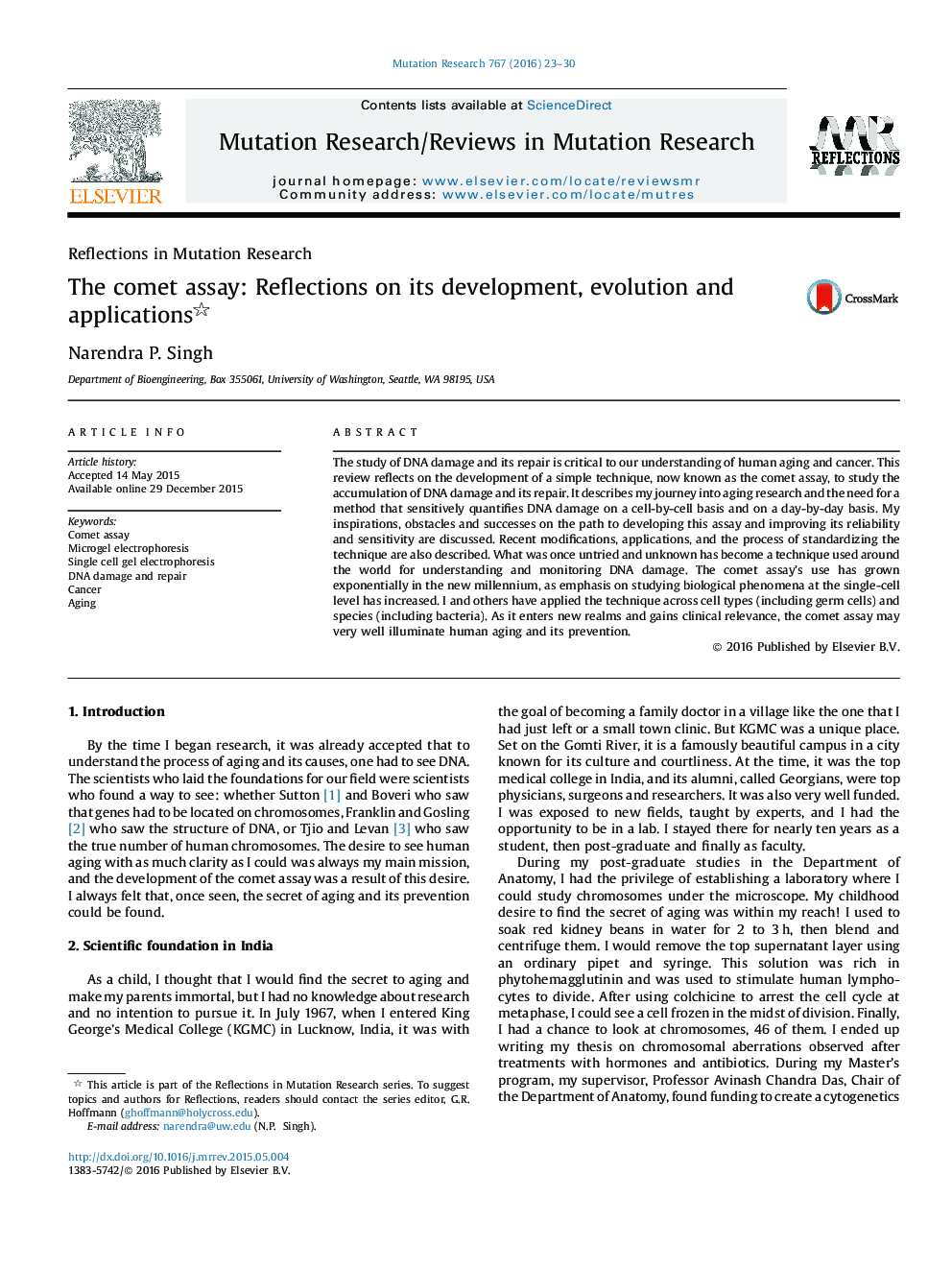| Article ID | Journal | Published Year | Pages | File Type |
|---|---|---|---|---|
| 2149617 | Mutation Research/Reviews in Mutation Research | 2016 | 8 Pages |
The study of DNA damage and its repair is critical to our understanding of human aging and cancer. This review reflects on the development of a simple technique, now known as the comet assay, to study the accumulation of DNA damage and its repair. It describes my journey into aging research and the need for a method that sensitively quantifies DNA damage on a cell-by-cell basis and on a day-by-day basis. My inspirations, obstacles and successes on the path to developing this assay and improving its reliability and sensitivity are discussed. Recent modifications, applications, and the process of standardizing the technique are also described. What was once untried and unknown has become a technique used around the world for understanding and monitoring DNA damage. The comet assay’s use has grown exponentially in the new millennium, as emphasis on studying biological phenomena at the single-cell level has increased. I and others have applied the technique across cell types (including germ cells) and species (including bacteria). As it enters new realms and gains clinical relevance, the comet assay may very well illuminate human aging and its prevention.
